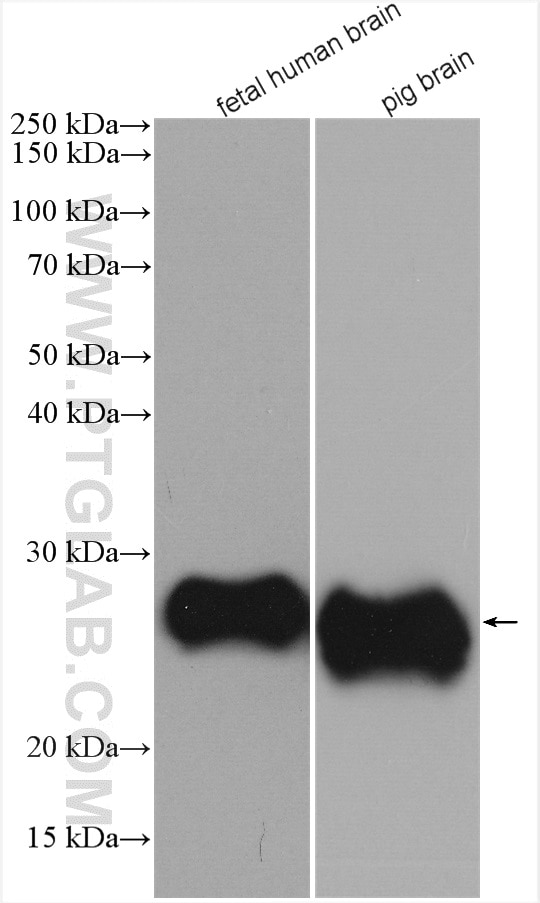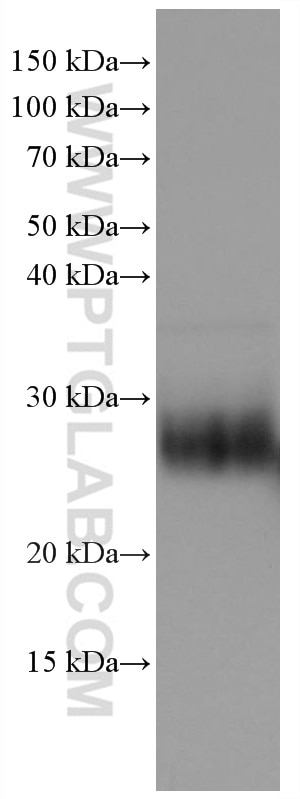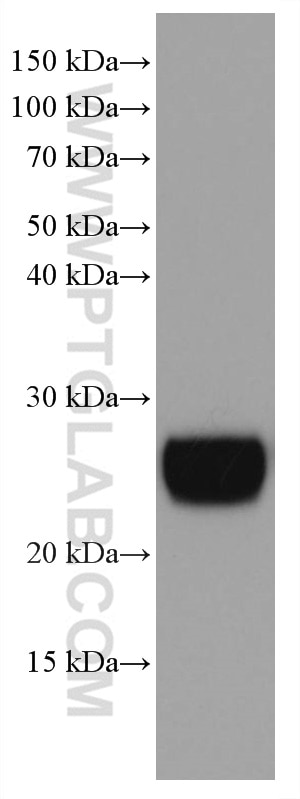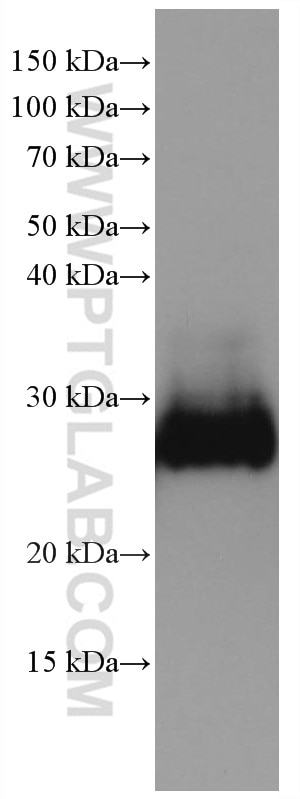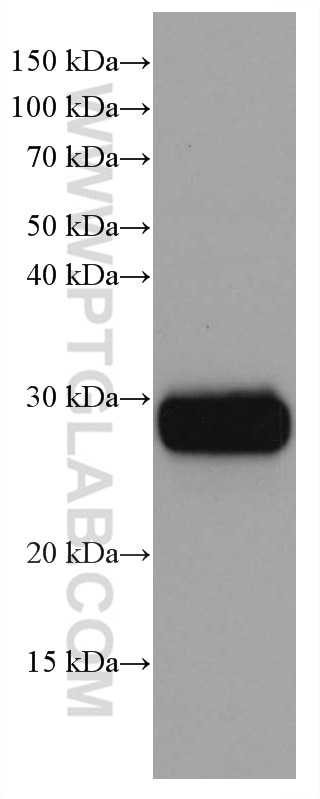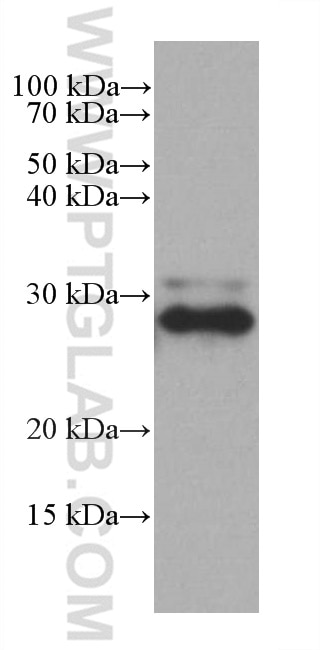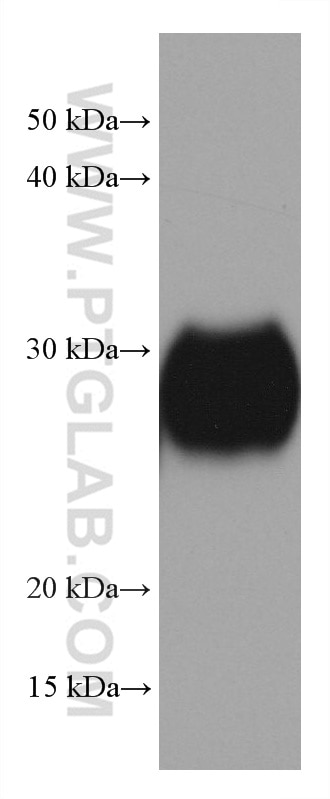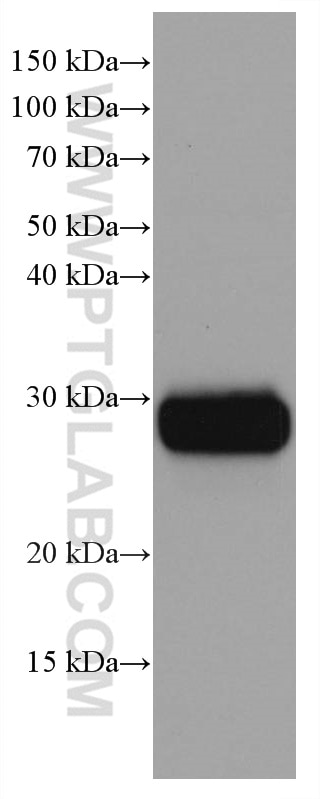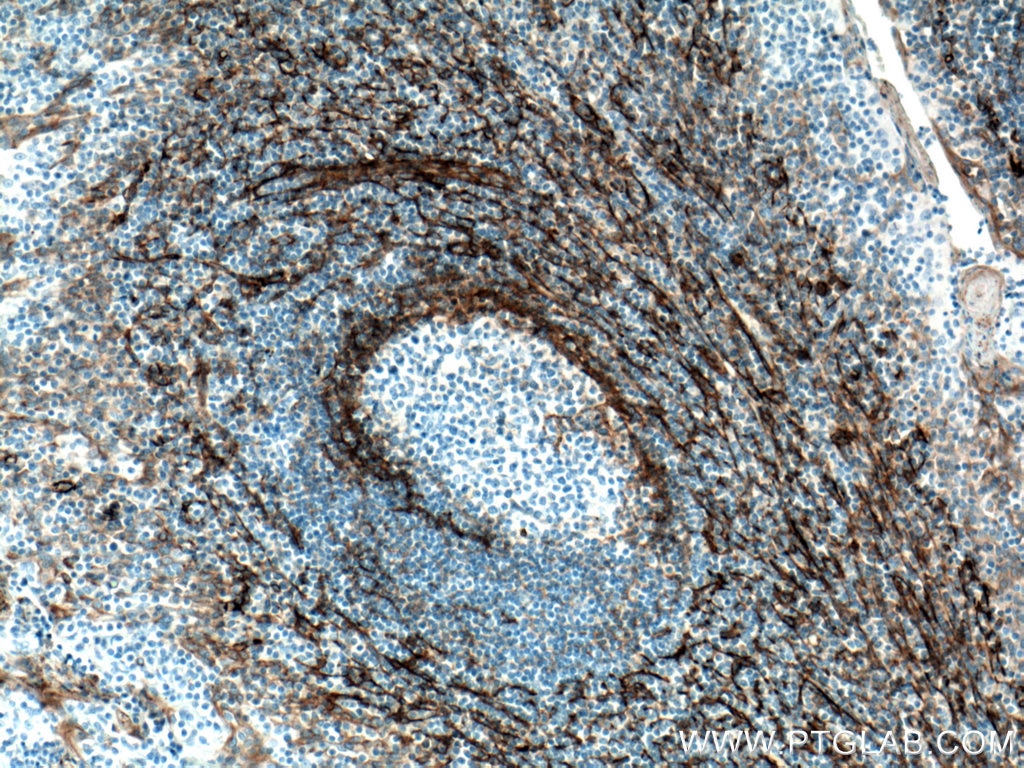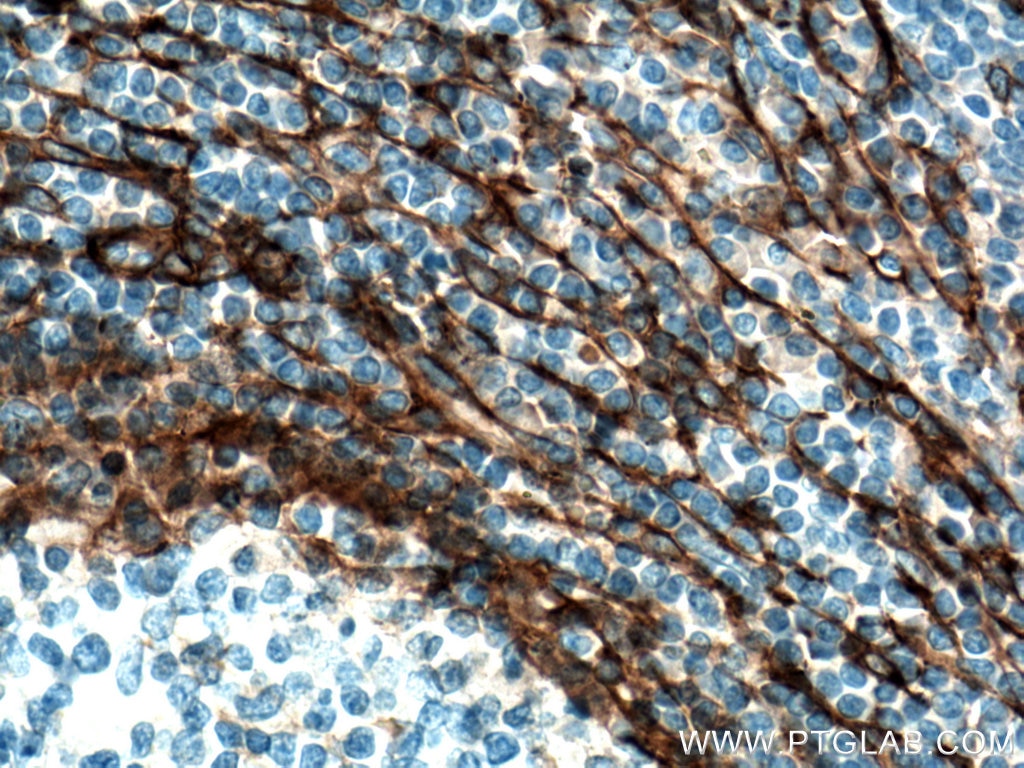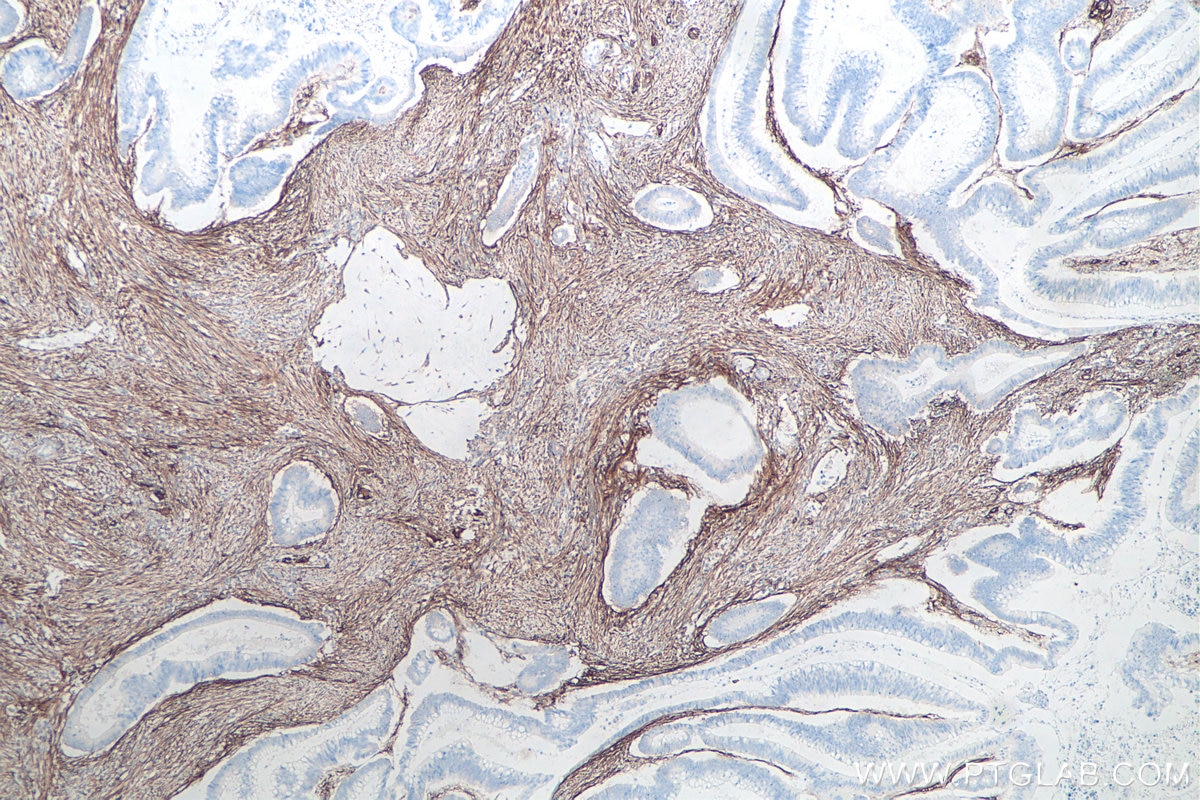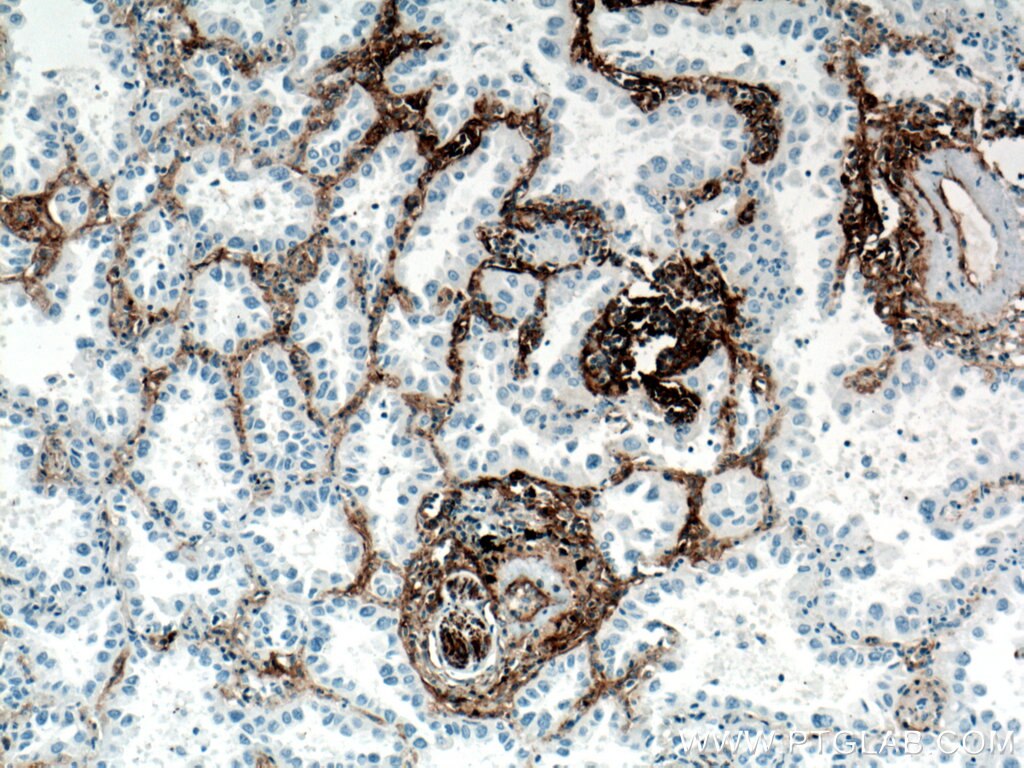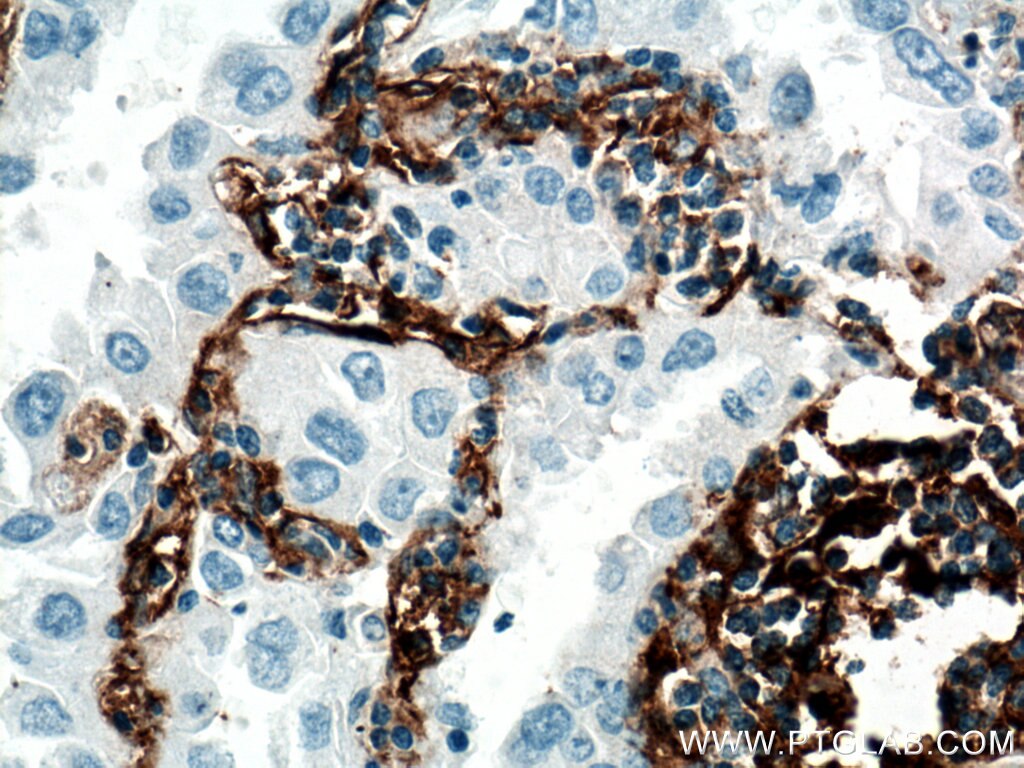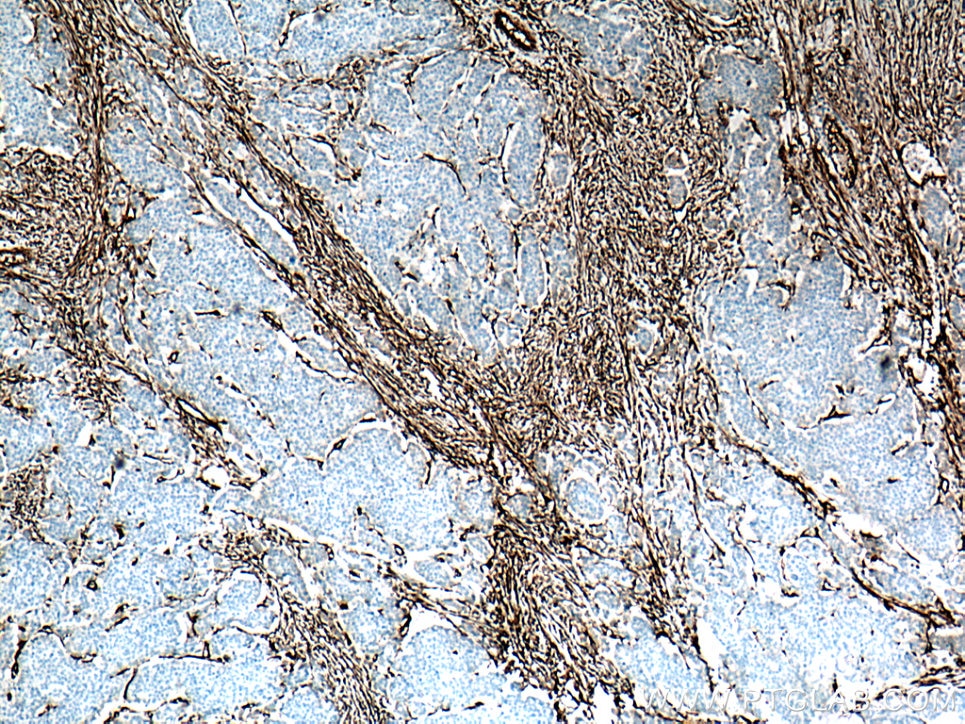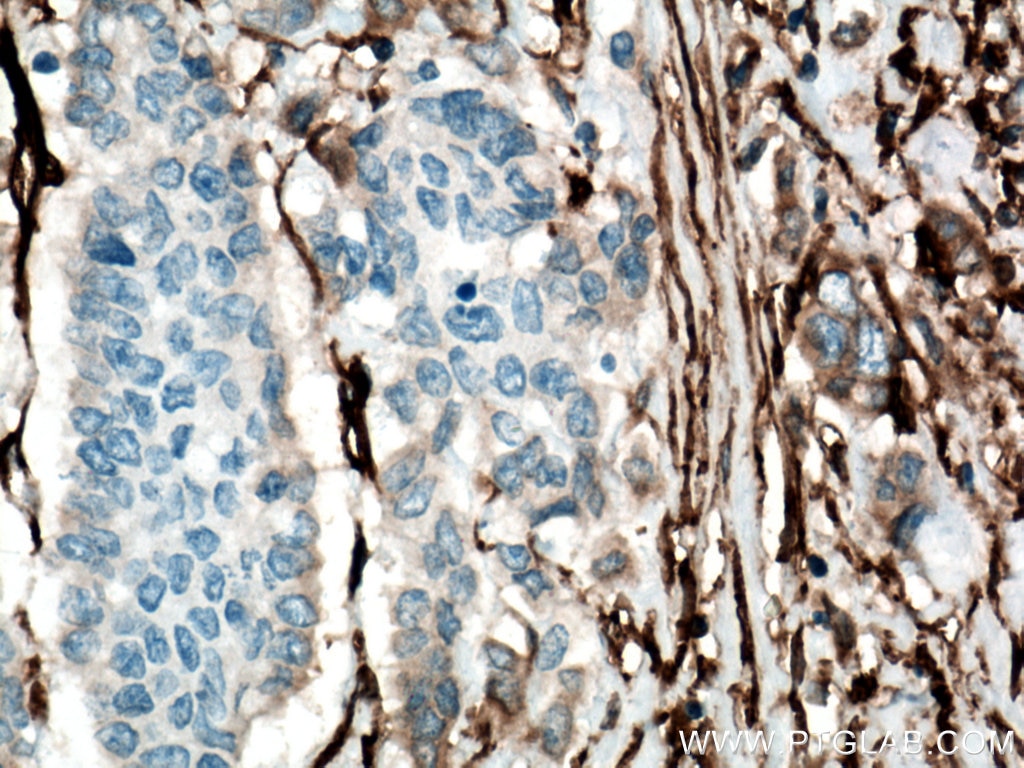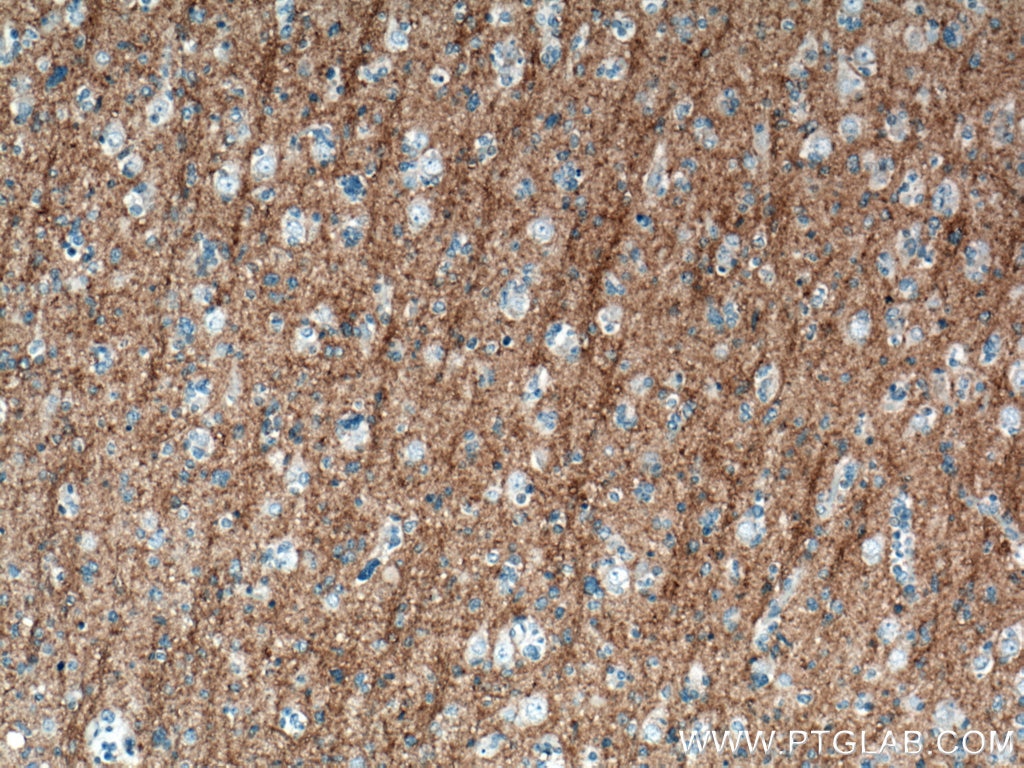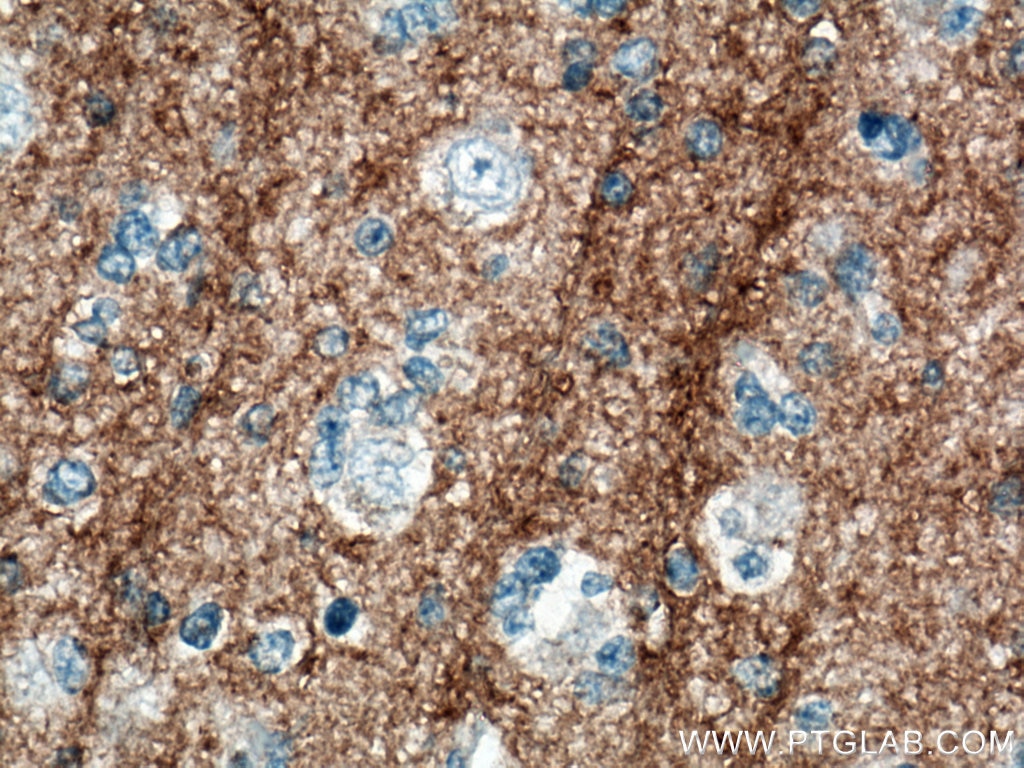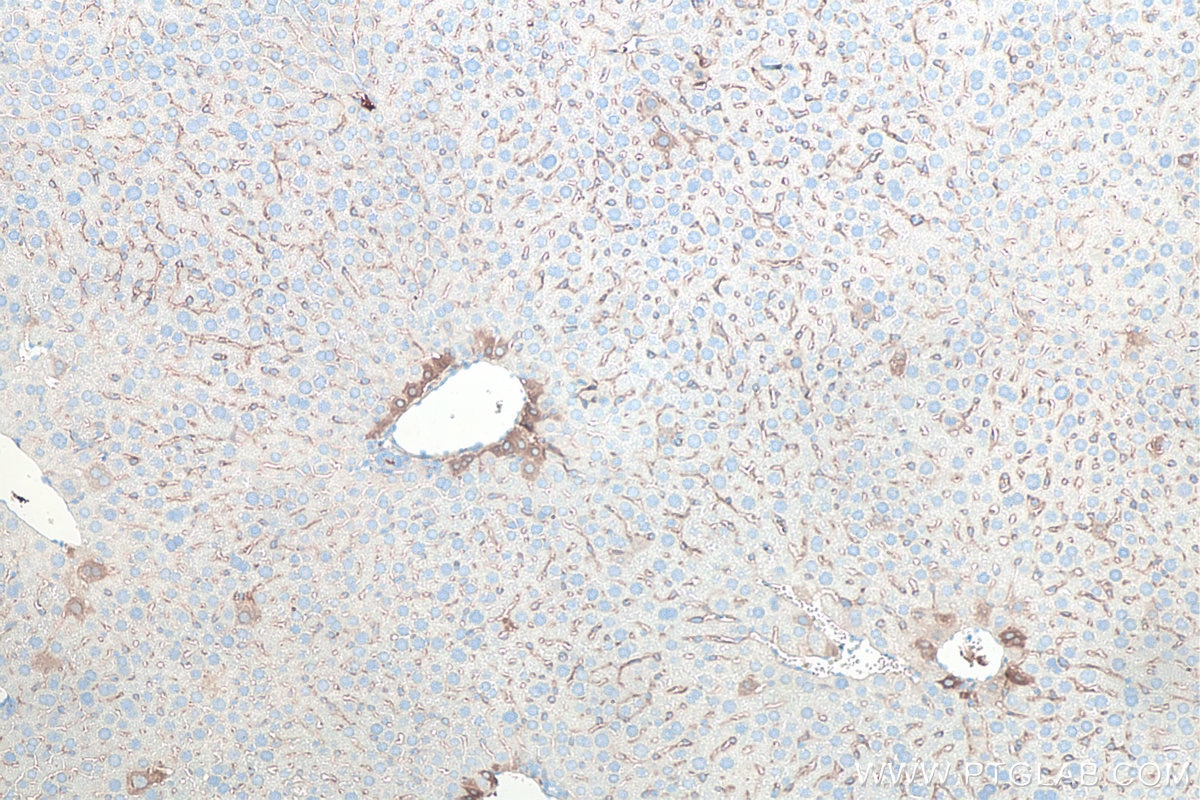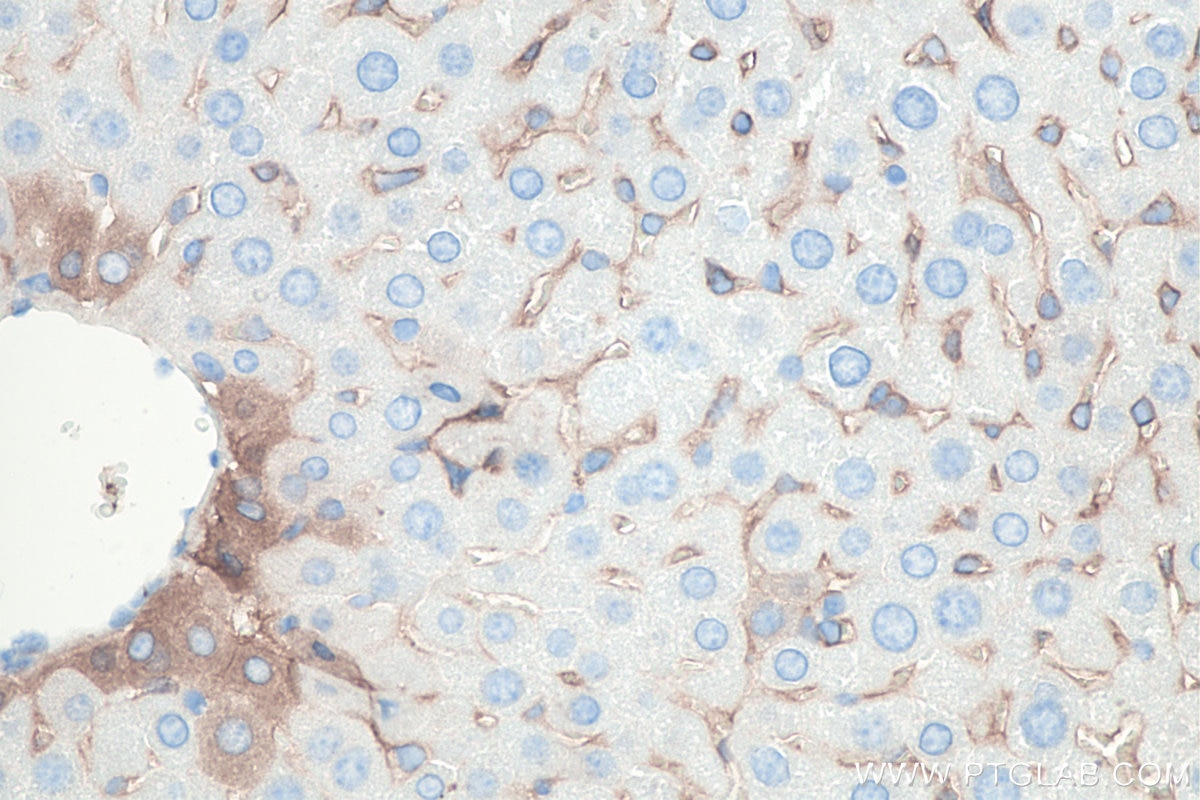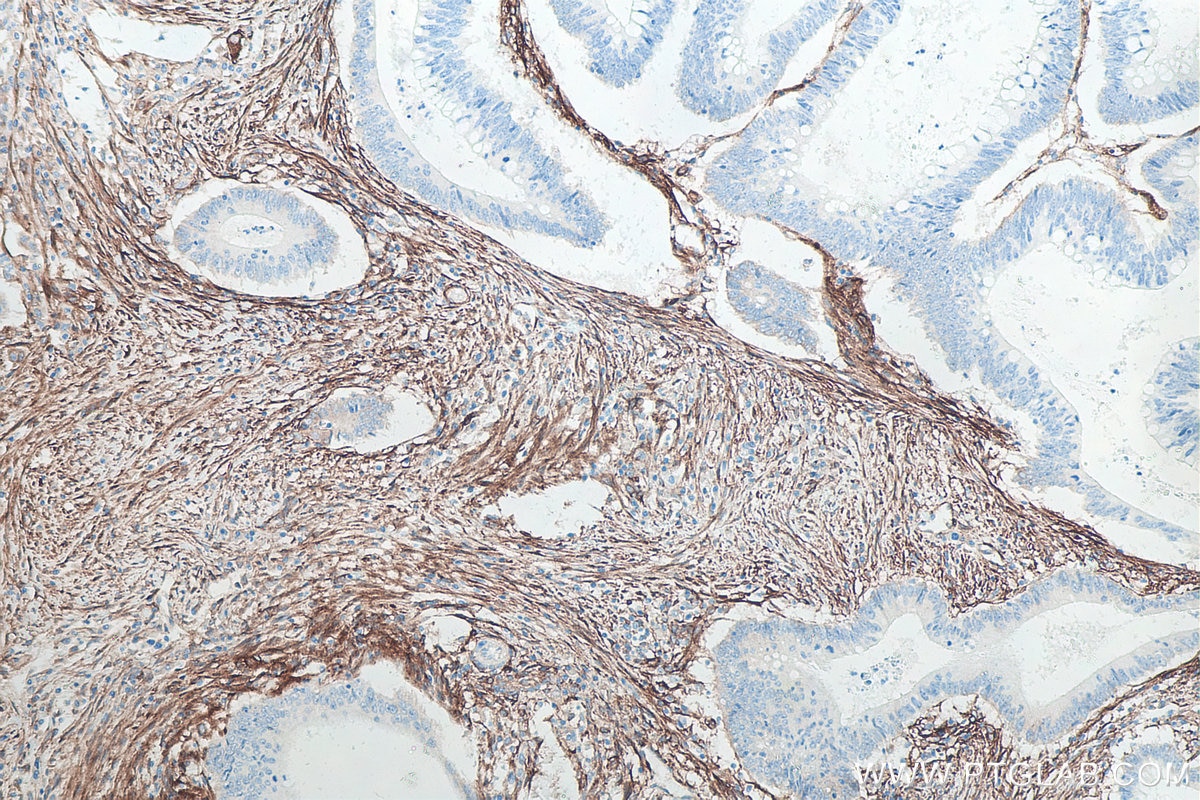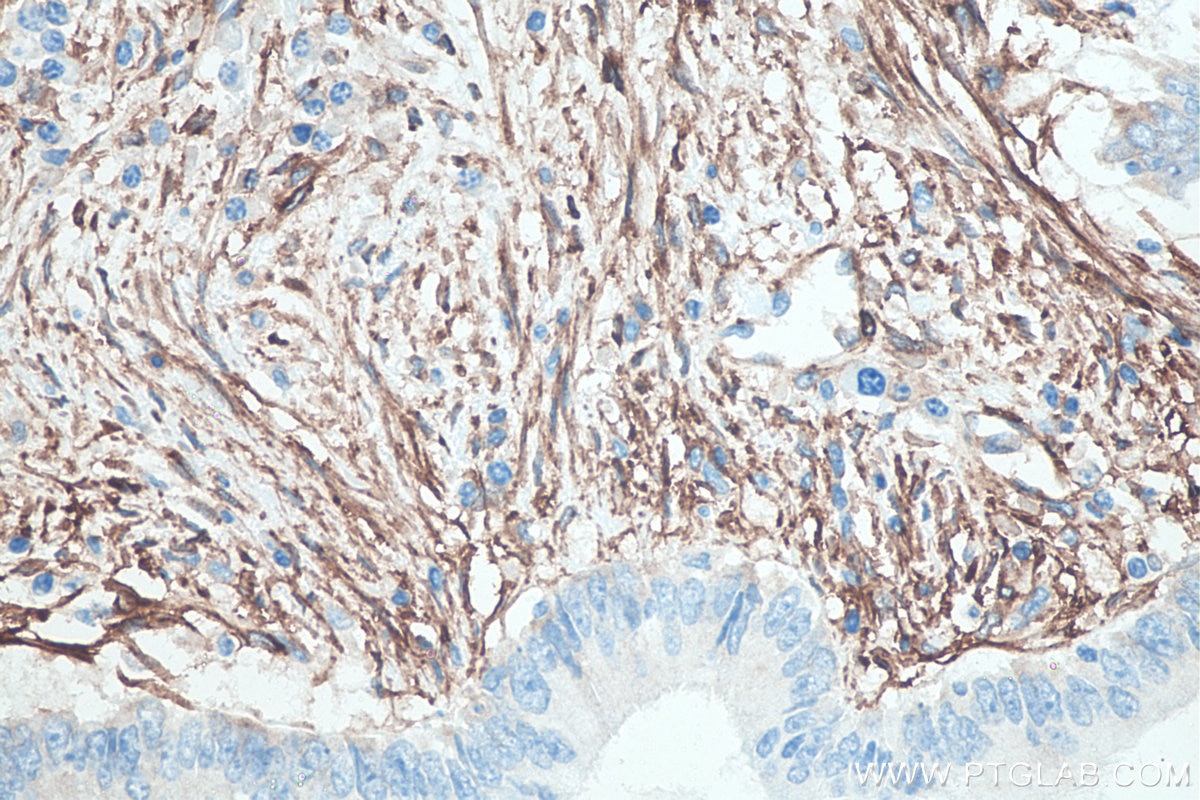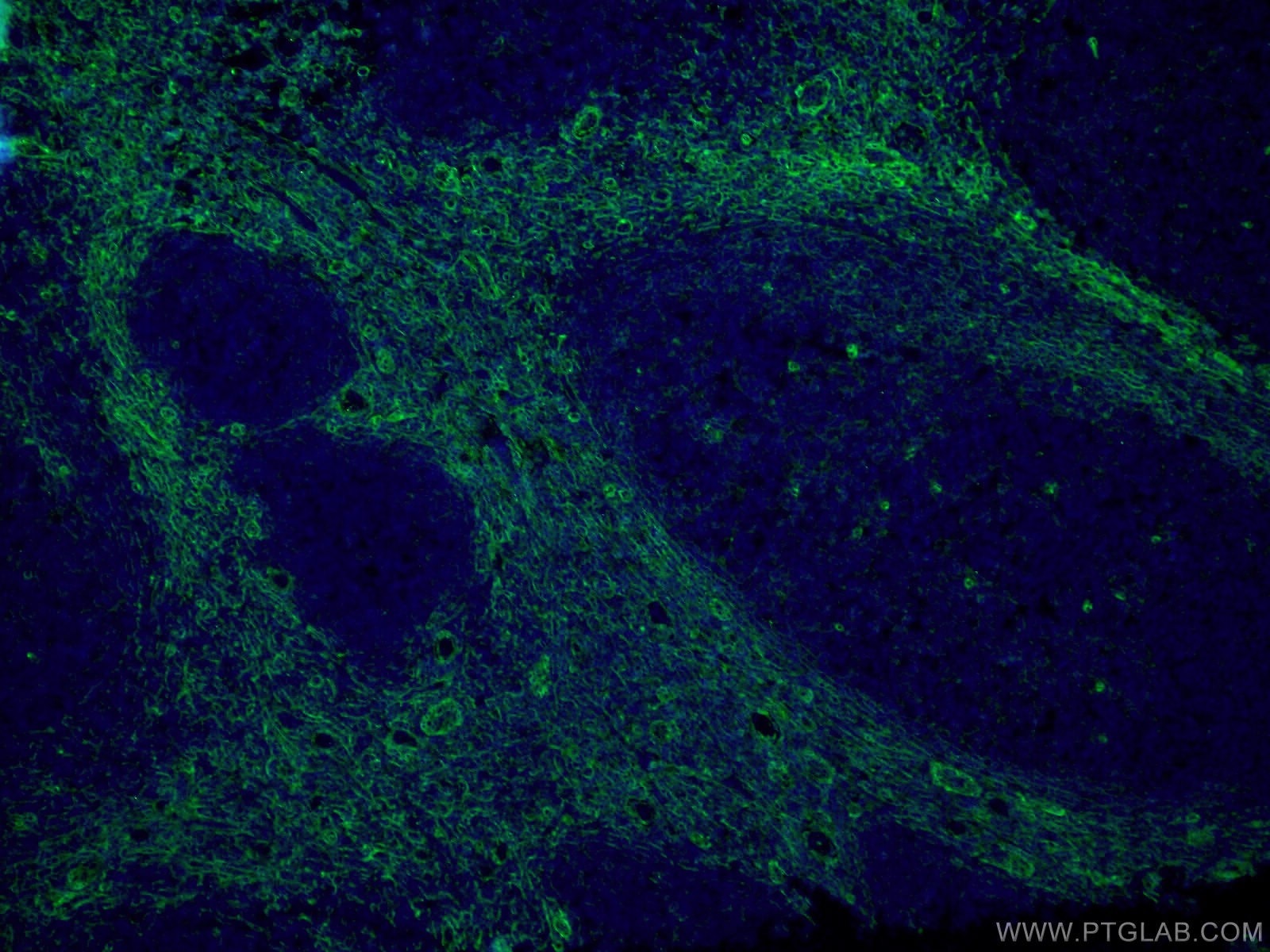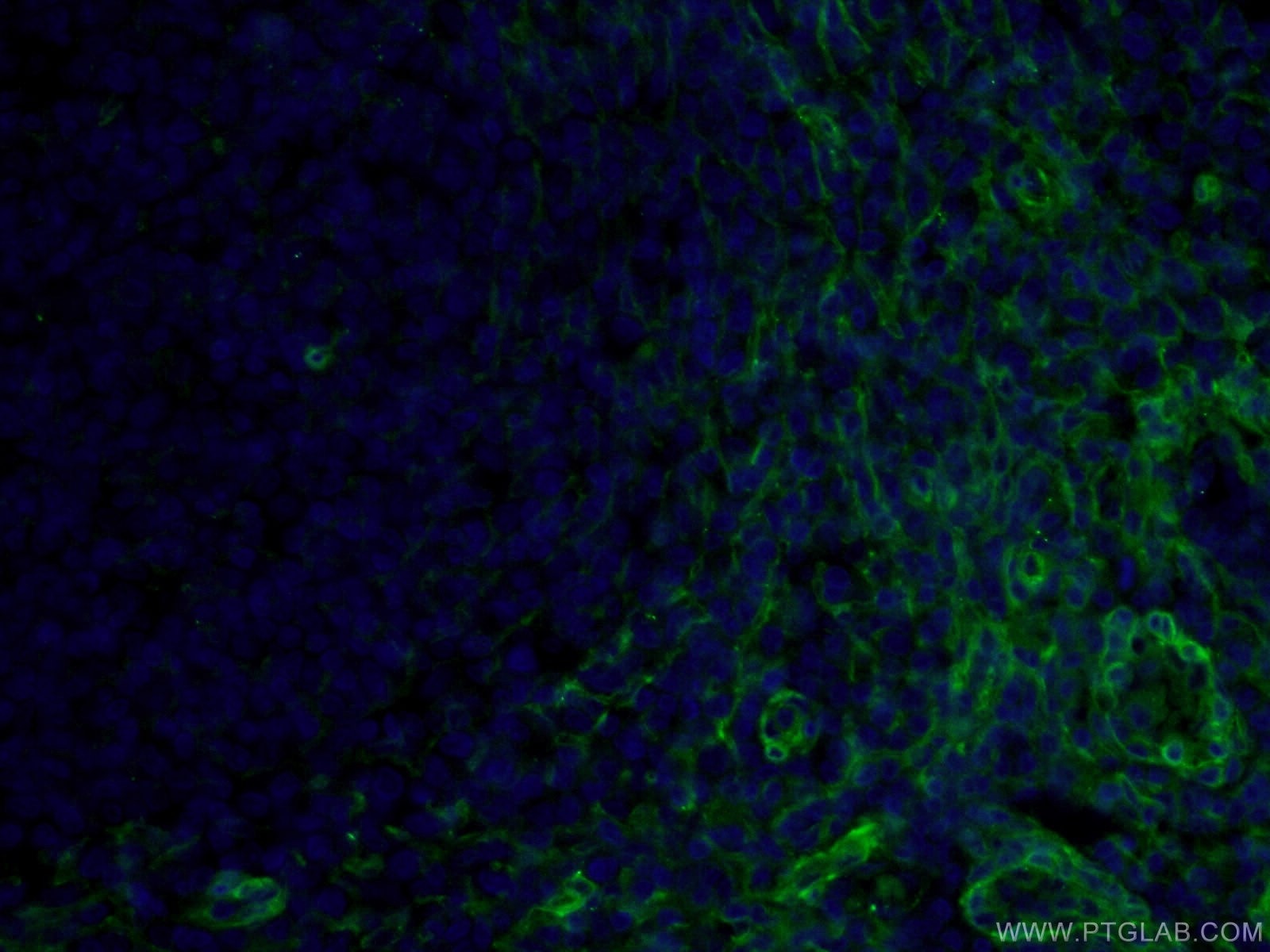Anticorps Monoclonal anti-CD90
CD90 Monoclonal Antibody for WB, IHC, IF-P, ELISA
Hôte / Isotype
Mouse / IgG2a
Réactivité testée
Humain, Lapin, porc, rat, souris et plus (1)
Applications
WB, IHC, IF-P, ELISA
Conjugaison
Non conjugué
CloneNo.
2D7D11
N° de cat : 66766-1-Ig
Synonymes
Galerie de données de validation
Applications testées
| Résultats positifs en WB | tissu cérébral humain fœtal, cellules U2OS, tissu cérébral de lapin, tissu cérébral de porc, tissu de côlon de porc, tissu rénal humain, tissu splénique de porc |
| Résultats positifs en IHC | tissu d'amygdalite humain, tissu de cancer du côlon humain, tissu de cancer du poumon humain, tissu de gliome humain, tissu hépatique de souris il est suggéré de démasquer l'antigène avec un tampon de TE buffer pH 9.0; (*) À défaut, 'le démasquage de l'antigène peut être 'effectué avec un tampon citrate pH 6,0. |
| Résultats positifs en IF-P | tissu d'amygdalite humain, |
Dilution recommandée
| Application | Dilution |
|---|---|
| Western Blot (WB) | WB : 1:2000-1:10000 |
| Immunohistochimie (IHC) | IHC : 1:500-1:2000 |
| Immunofluorescence (IF)-P | IF-P : 1:50-1:500 |
| It is recommended that this reagent should be titrated in each testing system to obtain optimal results. | |
| Sample-dependent, check data in validation data gallery | |
Applications publiées
| WB | See 9 publications below |
| IHC | See 5 publications below |
| IF | See 23 publications below |
| FC | See 3 publications below |
Informations sur le produit
66766-1-Ig cible CD90 dans les applications de WB, IHC, IF-P, ELISA et montre une réactivité avec des échantillons Humain, Lapin, porc, rat, souris
| Réactivité | Humain, Lapin, porc, rat, souris |
| Réactivité citée | rat, bovin, Humain, Lapin, porc, souris |
| Hôte / Isotype | Mouse / IgG2a |
| Clonalité | Monoclonal |
| Type | Anticorps |
| Immunogène | CD90 Protéine recombinante Ag25603 |
| Nom complet | Thy-1 cell surface antigen |
| Masse moléculaire calculée | 161 aa, 18 kDa |
| Poids moléculaire observé | 28 kDa |
| Numéro d’acquisition GenBank | BC065559 |
| Symbole du gène | CD90/Thy1 |
| Identification du gène (NCBI) | 7070 |
| Conjugaison | Non conjugué |
| Forme | Liquide |
| Méthode de purification | Purification par protéine A |
| Tampon de stockage | PBS with 0.02% sodium azide and 50% glycerol |
| Conditions de stockage | Stocker à -20°C. Stable pendant un an après l'expédition. L'aliquotage n'est pas nécessaire pour le stockage à -20oC Les 20ul contiennent 0,1% de BSA. |
Informations générales
CD90, also known as THY1, is a 25-35 kD protein that is expressed on 1-4% of human fetal liver cells, cord blood cells, and bone marrow cells. CD90 is one of the essential surface molecules expressed on human MSC from bone marrow and other sources. Activation of Thy-1 has been reported to promote T cell activation. It also affects numerous nonimmunologic biological processes, including cellular adhesion, neurite outgrowth, tumor growth, migration, and cell death.
Protocole
| Product Specific Protocols | |
|---|---|
| WB protocol for CD90 antibody 66766-1-Ig | Download protocol |
| IHC protocol for CD90 antibody 66766-1-Ig | Download protocol |
| IF protocol for CD90 antibody 66766-1-Ig | Download protocol |
| Standard Protocols | |
|---|---|
| Click here to view our Standard Protocols |
Publications
| Species | Application | Title |
|---|---|---|
Cell Mol Biol Lett Reciprocal negative feedback between Prrx1 and miR-140-3p regulates rapid chondrogenesis in the regenerating antler | ||
Int J Biol Macromol A light-cured injectable composite hydrogel based on chitosan and decellularized matrix modulates stem cell aggregation behavior for accelerating cartilage defect repair | ||
J Mol Cell Biol Cancer-associated adipocytes-derived G-CSF promotes breast cancer malignancy via Stat3 signaling. | ||
Int J Mol Sci Expression of Cancer Stem Cell Markers EpCAM and CD90 Is Correlated with Anti- and Pro-Oncogenic EphA2 Signaling in Hepatocellular Carcinoma. | ||
Inflamm Bowel Dis Stromal Cell Subsets Show Model-Dependent Changes in Experimental Colitis and Affect Epithelial Tissue Repair and Immune Cell Activation | ||
Int J Biol Sci Cancer-associated adipocytes promote the invasion and metastasis in breast cancer through LIF/CXCLs positive feedback loop. |
